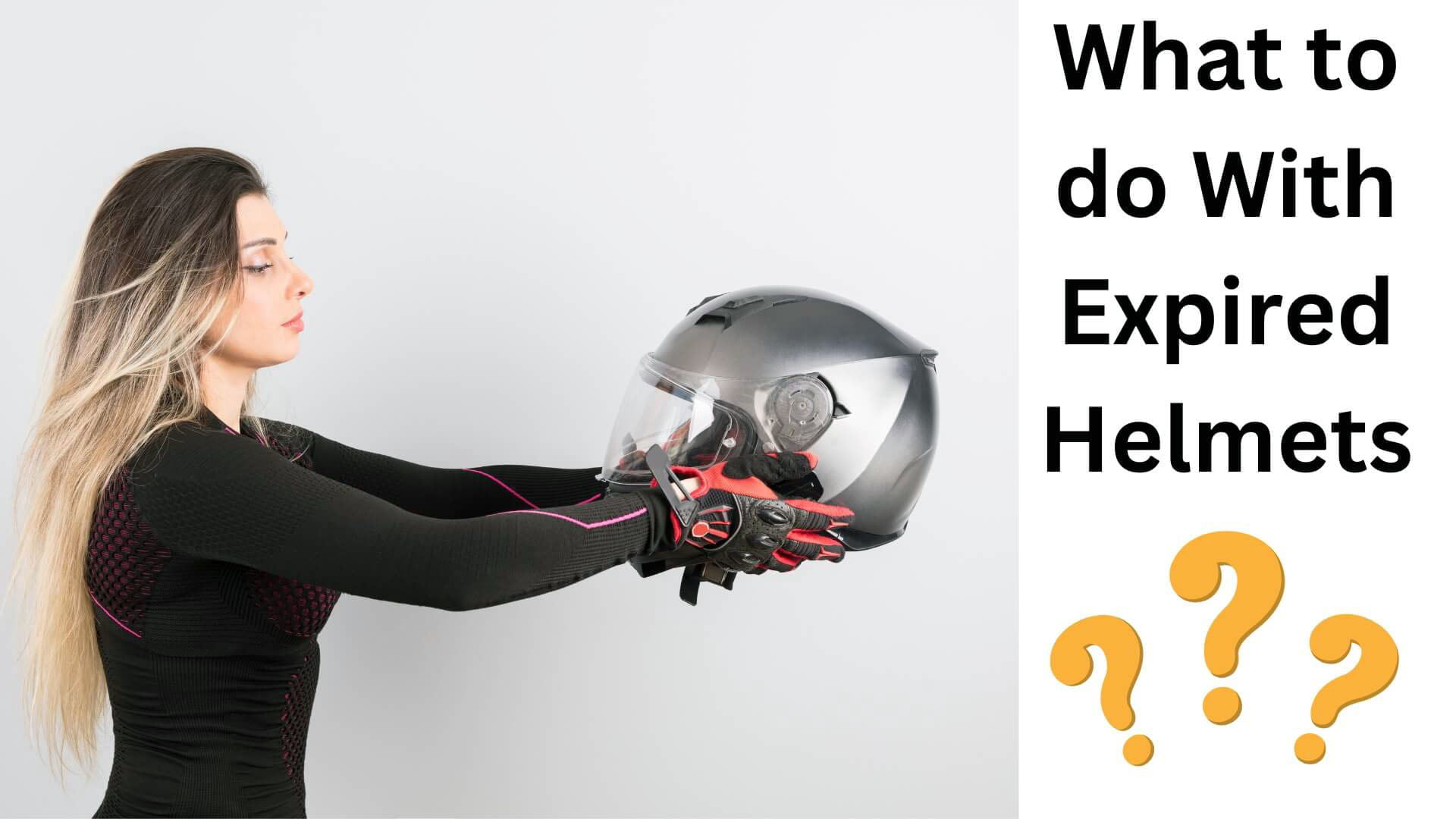How To Use Welding Helmet? Shield Your Skills
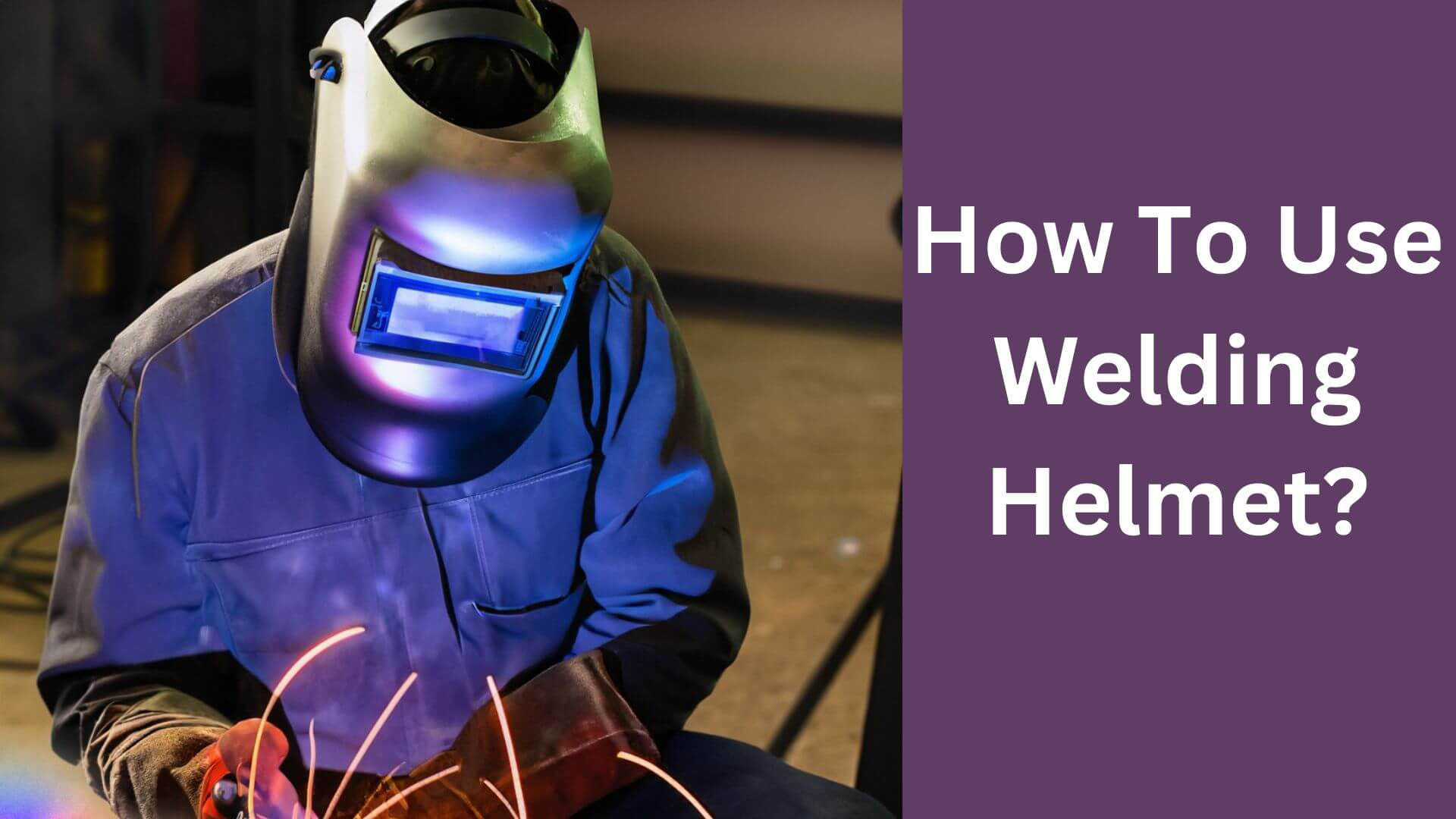
Are you new to welding and wondering how to use a welding helmet? Or are you a seasoned welder looking to improve your skills? Either way, having the fitting welding helmet and knowing how to use it properly can make all the difference in your welding experience.
Now, let’s dive into the steps of using a welding helmet. First, ensure the helmet is properly adjusted to fit your head comfortably. Next, check the lens shade to ensure it is appropriate for the welding you will be doing. Then, ensure the helmet is down before starting the arc.
With these simple steps, you’ll be ready to weld confidently and safely. Don’t let a lack of knowledge or improper equipment prevent you from mastering this valuable skill. Take action today and start your welding journey with the right tools and knowledge. So let’s dive in and start welding like a pro!
What is a Welding Helmet?

A welding helmet is a headgear that protects the welder’s face, eyes, and neck from the intense light and heat produced during welding. It is essential safety equipment shielding the welder from harmful radiation and flying debris.
Welding helmets come in different types, sizes, and shapes; choosing the right one is crucial for the welder’s safety.
Read More: Are Welding Helmets Necessary?
Why Is a Welding Helmet Important?
A welding helmet is an essential safety equipment that protects your eyes, face, and neck from sparks, intense light, and harmful radiation emitted during welding.
Welding without a helmet can result in serious eye injuries and skin burns. Therefore, it is crucial to wear a welding helmet whenever you engage in welding activities.
Types of Welding Helmets
Several types of welding helmets are available in the market, each with its features and benefits. The two main types are:
- Passive Welding Helmets: These helmets have a fixed shade lens and are more affordable. They require you to manually lift the helmet whenever you need to inspect your work or set up a new weld.
- Auto-Darkening Welding Helmets: These helmets feature an auto-darkening lens that adjusts its shade level based on the arc brightness. They offer greater convenience and flexibility, as you don’t have to lift and lower the helmet constantly.
Read More: Welding Helmet Prices: Factors, Brands, & Features Explored
Choosing the Right Welding Helmet
When selecting a welding helmet, consider the following factors:
- Lens Shade: The lens shade number determines the level of darkness the helmet provides. Refer to the welding process guidelines or consult experts to choose the appropriate lens shade for your specific welding needs.
- Optical Clarity: Look for helmets with high optical clarity to ensure clear vision during welding. This is particularly important for intricate and precise welding tasks.
- Weight and Comfort: Opt for a lightweight helmet with proper padding and an adjustable headgear system for maximum comfort, especially if you wear it for extended periods.
- Durability: Choose a helmet of sturdy materials that can withstand harsh welding conditions. It should protect you effectively and last for a long time.
Read More: Clear Sight in Welding Helmets: Pro Tips and Tricks
How to Putting on a Welding Helmet? Step By Step
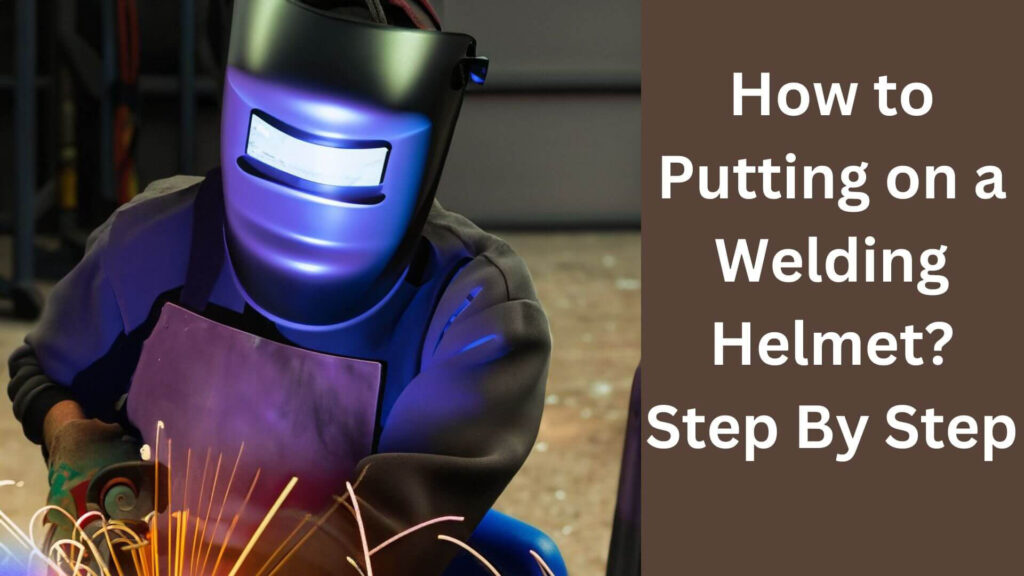
Now that you have chosen the fitting welding helmet, it’s time to wear it and prepare for your welding project. Follow these steps:
Step 1: Inspect the Helmet
Before putting on the helmet, ensure it is clean, debris-free, and in good working condition.
Step 2: Prepare Yourself
Put on any necessary personal protective equipment (PPE), such as safety glasses, gloves, and a welding jacket.
Step 3: Position the Helmet:
Hold the helmet with both hands and position it over your head, thoroughly covering your face and neck.
Step 4:Secure the Headgear:
Adjust the headgear system to achieve a snug and secure fit. The helmet should not be loose or tight.
Step 5:Lower the Helmet
Lower the helmet into position, covering your face and eyes. Ensure that the helmet is seated correctly and doesn’t obstruct your vision.
Read More: How to Tell If a Welding Helmet Is Working?
How to Adjust the Fit in Welding Helmet?
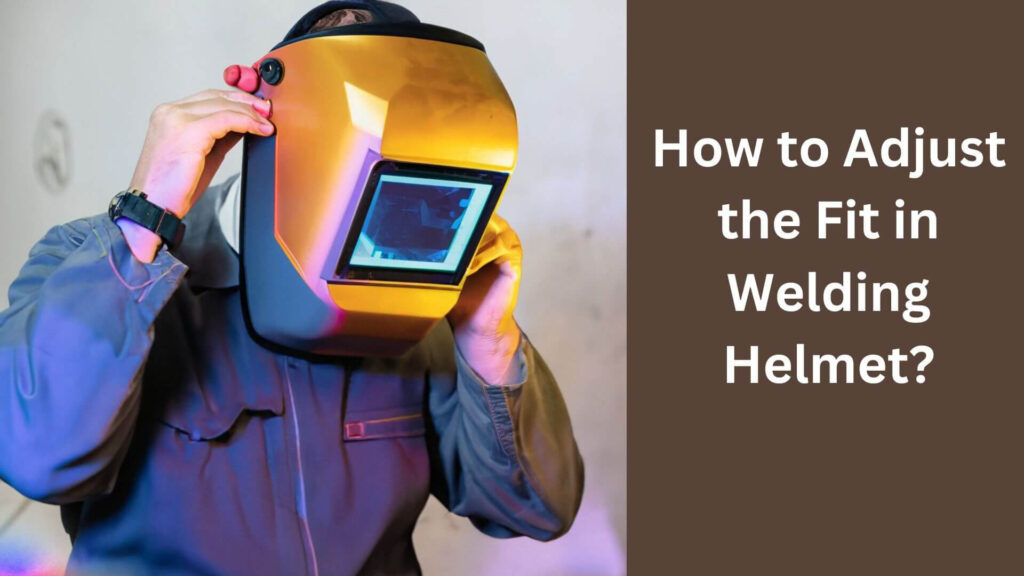
An adequately fitted welding helmet is essential for comfort and safety. Follow these tips to adjust the fit of your helmet:
- Headband: Adjust the headband tension so the helmet fits snugly on your head without causing discomfort or pressure points.
- Crown Strap: If your helmet has a crown strap, adjust it to ensure a secure fit. The crown strap helps distribute the weight of the helmet evenly.
- The angle of the Helmet: Tilt the helmet slightly forward or backward to find the most comfortable position for you. It should provide a clear view of your work without straining your neck.
- Side Tensioners: Some helmets have side tensioners that allow you to adjust the distance between the helmet and your face. Use them to achieve a comfortable fit.
Read More: How to Adjust Welding Helmet?
Understanding the Controls
Modern welding helmets often come with various controls and features. Familiarize yourself with the controls to make the most out of your helmet:
- On/Off Switch: This switch activates or deactivates the auto-darkening feature of the helmet. Ensure the switch is in the correct position before starting your welding task.
- Sensitivity Control: Adjust the sensitivity control to customize the helmet’s response to the arc brightness. This feature is particularly useful when working with different welding techniques or materials.
- Delay Control: The delay control determines how long the lens stays dark after the welding arc stops. Experiment with different delay settings to find the one that suits your welding style.
- Grind Mode: Some helmets have a grind mode that allows you to use the helmet as a face shield during grinding or other non-welding tasks. Activate the grind mode when needed.
Read More: Expert Tips: Installing Cheater Lens in Your Welding Helmet
How to Proper Lens Selection in Welding Helmet?
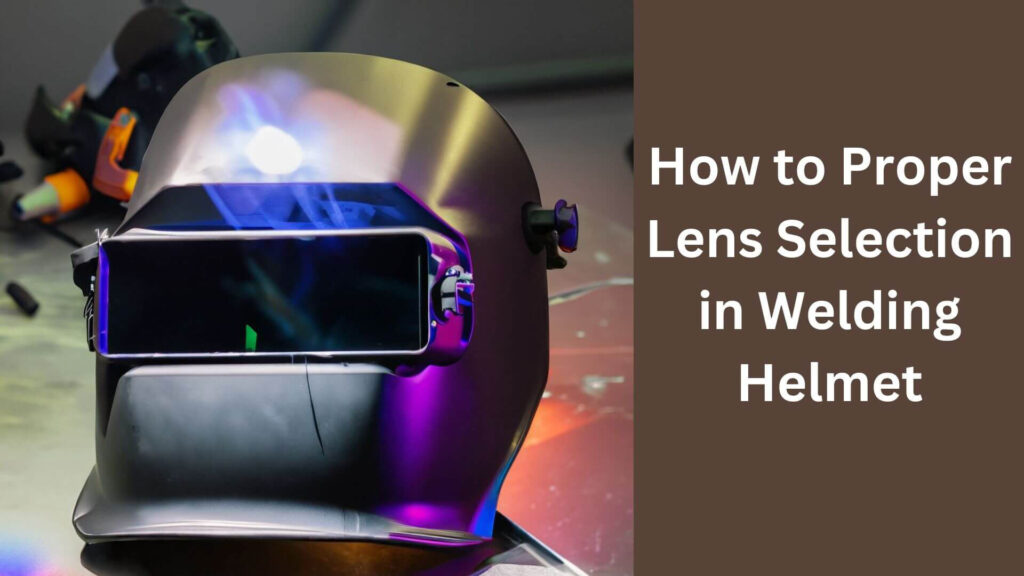
The lens in your welding helmet protects your eyes from the intense light and harmful radiation produced during welding. Here are some considerations for proper lens selection:
- Lens Shade: The lens shade number indicates the level of darkness the lens provides. Different welding processes require different shades, so consult welding guidelines or experts to determine the appropriate shade for your specific application.
- Variable Shade Lens: Consider investing in a welding helmet with a variable shade lens. These lenses automatically adjust their darkness level according to the arc brightness, providing optimal protection and visibility.
- Lens Material: Opt for lenses made of high-quality materials that offer superior optical clarity, impact resistance, and protection against ultraviolet (UV) and infrared (IR) radiation.
- Replacement Schedule: Regularly check the condition of your lens and replace it if it becomes scratched, damaged, or discolored. A worn-out lens can compromise your safety and visibility.
Read More: Learn How to Charge Your Welding Helmet?
How Maintaining Your Welding Helmet?
Proper maintenance of your welding helmet ensures its longevity and effectiveness. Follow these tips to keep your helmet in top condition:
- Clean Regularly: Clean your helmet regularly to remove dust, debris, and welding spatter. Use a soft cloth or brush to wipe the exterior and a mild soap solution to clean the lens.
- Inspect for Damage: Periodically inspect your helmet for any signs of damage, such as cracks, broken parts, or loose fittings if you notice any issues, repair or replace the helmet immediately.
- Store Properly: When not in use, store your helmet in a cool, dry place away from direct sunlight and extreme temperatures. This helps prevent the deterioration of the helmet’s materials.
- Replace Batteries: If your welding helmet runs on batteries, replace them as needed to ensure the proper functioning of the auto-darkening feature and other electronic controls.
Common Mistakes to Avoid
To ensure a safe and effective welding experience, avoid the following common mistakes:
- Welding without a Helmet: Never attempt to weld without a welding helmet. Even a brief exposure to intense light can cause severe eye damage.
- Incorrect Lens Shade: Using the wrong lens shade can result in inadequate protection or reduced visibility. Refer to welding guidelines or consult experts to select the appropriate shade for your specific welding process.
- Neglecting Maintenance: Regular maintenance is essential to keep your helmet in good working condition. Neglecting cleaning, inspections, and necessary repairs can compromise your safety.
- Improper Fit: A poorly fitted helmet can be uncomfortable, obstruct your vision, or fail to provide adequate protection. Take the time to adjust the headgear and straps for a snug and secure fit.
- Ignoring Comfort: Welding can be physically demanding, so prioritize your comfort by choosing a lightweight helmet with proper padding and adjustable features.
- Not Using Other PPE: A welding helmet is crucial but not the only protective equipment you need. Always wear additional PPE such as safety glasses, gloves, and a welding jacket for comprehensive protection.
FAQS About How To Use Welding Helmet?
How do I properly clean my welding helmet?
To clean your welding helmet, follow these steps:
- Remove any detachable parts, such as the lens or headgear, if possible.
- Use a soft cloth or brush to remove dust, debris, or welding spatter from the exterior.
- Prepare a mild soap solution and dampen a clean cloth with it.
- Gently wipe the helmet, focusing on the areas that require cleaning.
- Clean the cloth and wipe away any soap residue.
- Allow the helmet to air dry completely before reassembling and storing it.
Can you use a welding helmet for other purposes?
While a welding helmet is designed specifically for welding, it can also be used as a face shield for other tasks that require eye and face protection, such as grinding or cutting metal. However, ensuring that the helmet’s features suit the specific task is essential.
What should I do if the auto-darkening feature stops working?
If the auto-darkening feature of your welding helmet stops working, try the following troubleshooting steps:
- Check the battery: If your helmet is battery-powered, ensure the batteries are fresh and properly inserted. Replace them if necessary.
- Inspect the controls: Make sure that the controls are set correctly. Adjust the sensitivity and delay settings to see if it resolves the issue.
- Clean the lens: Dirt, debris, or welding spatter on the lens can interfere with the auto-darkening function. Clean the lens thoroughly, following the manufacturer’s instructions.
- Seek professional assistance: If the problem persists, contact the manufacturer or a qualified technician for further assistance or repair.
Can I wear glasses under my welding helmet?
Yes, you can wear prescription or safety glasses with your welding helmet. However, ensure that the helmet provides enough space for the glasses to fit comfortably without compromising the helmet’s effectiveness or vision.
Some welding helmets are designed to accommodate glasses, so look for those options if needed.
How often should I replace the lens in my welding helmet?
The lens replacement frequency depends on various factors, such as the lens material, usage intensity, and level of care. However, as a general guideline, consider replacing the lens in your welding helmet if it becomes scratched, damaged, or discoloured.
Regularly inspect the lens for signs of wear and tear, and replace it as needed to maintain optimal visibility and protection.
Can I weld without a welding helmet?
Welding without a welding helmet is extremely dangerous and should never be attempted. The intense light and harmful radiation produced during welding can cause severe eye injuries, skin burns, and long-term damage. Always wear a properly fitted welding helmet and other appropriate personal protective equipment (PPE) to ensure your safety.
The Final Say
In conclusion, knowing how to use a welding helmet correctly is essential for your safety and the quality of your welding work.
Following the guidelines and tips in this comprehensive guide, you can confidently wear your welding helmet, protect your eyes and face, and enjoy a successful welding experience.
Remember to choose the right helmet, adjust the fit, understand the controls, and maintain your helmet correctly. With the proper usage of a welding helmet, you can weld with confidence and peace of mind.

Hey, I’m Hrithik Hossain. I am the head of helmethacks.com, which specializes in safety helmets. I am looking to connect with anyone interested in purchasing a helmet or who has any questions about different types of helmets. I have over 8 years of experience as a helmet expert, and I can’t wait to help you find the perfect helmet for you. I can help you with any questions regarding helmets, from the best brands to fitting, style, and more! I really enjoy keeping people safe by ensuring they have the best protection possible.






